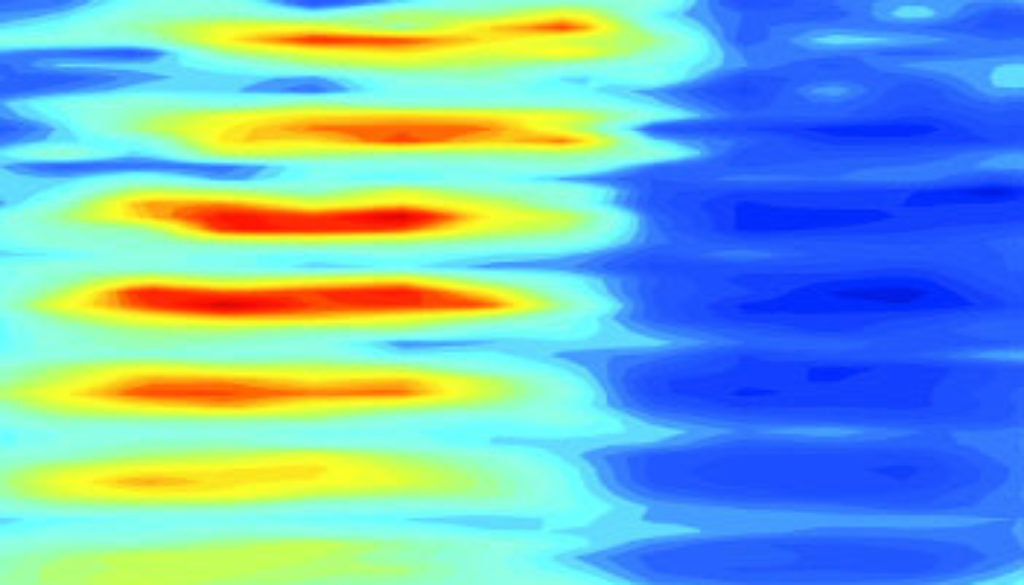New Look for Classic Experiment
Physicists in Europe and the U.S. have performed a novel version of the double-slit quantum-interference experiment with single electrons. In the classic version of the experiment, which was recently voted the most beautiful experiment of all time by readers of “Physics World,” electrons pass through a mask containing two parallel slits and produce a pattern of bright and dark interference fringes on a screen. Now, Gerhard Paulus of Texas A&M University and co-workers in Berlin, Munich, Sarajevo and Vienna have observed an interference pattern with electrons that pass through a double slit in time, not space, as a result of being ejected from an atom at one of two possible times by a laser pulse.
The double-slit experiment was first performed with light by Thomas Young over 200 years ago.The formation of the fringes can be explained by the interference of waves travelling from the two slits. When the peaks of the two waves coincide on the screen, the interference is constructive and the result is a bright fringe. However, if the peak of one wave coincides with the trough of the other, destructive interference results in a region of darkness.
The spacing between the fringes depends on the wavelength of the light and the separation of the slits. Similar interference fringes have also been observed with electrons, atoms and molecules, with the fringe spacing depending on the de Broglie wavelength of the particles (see pages 35-40).
Experiments have also shown that an interference pattern builds up even if there is only one particle in the apparatus at any time, and that the pattern disappears if we try to determine which slit it passes through. This process is now understood in terms of interference between the two possible paths through the apparatus, rather than between two waves or particles: if we know “which way” the electron passes through the slits, we do not see interference, and vice versa.
The latest experiment is radically different because the slits exist in time not space, and because the interference pattern appears when the number of electrons at the detector is plotted as a function of their energy rather than their position on a screen. The work was performed at the Technical University of Vienna in collaboration with physicists from the Max Born Institute in Berlin, the Max Planck Institute for Quantum Optics in Munich and the University of Sarajevo.
Paulus and co-workers focused a train of pulses from a Ti:sapphire laser into a chamber containing a gas of argon atoms. The pulses were so short – just 5 fs – that each one contained just a few cycles of the electric field.
The team was able to control the output of the laser so that all the pulses were identical. The researchers could, for example, ensure that each pulse contained two maxima of the electric field (i.e., two peaks with large positive values) and one minimum (a peak with a large negative value). There was a small probability that an atom would be ionized by one or other of the maxima, which therefore played the role of the slits, with the resulting electron being accelerated towards a detector. If the atom was ionized by the minimum, the electron travelled in the opposite direction towards a second detector.
The team registered the arrival times of the electrons at both detectors and then plotted the number of electrons as a function of energy. The researchers observed interference fringes at the first detector because it was impossible to know if an electron counted by the detector was produced during the first or second maximum.
There was no interference pattern at the second detector because all the electrons were produced at the same time at the minimum. However,when the phase of the laser was changed so that there was one maximum and two minima, interference fringes were seen at the second detector but not at the first. “We have complete which-way information and no which-way information at the same time for the same electron,” says Paulus. “It just depends on the direction from which we look at it.”
Other physicists are impressed by the work. “This experiment should be included in every textbook on quantum mechanics,” says Wolfgang Schleich, a quantum physicist at the University of Ulm in Germany. “It certainly will be in mine.”
[Complete article can be accessed online at http://physicsweb.org/articles/news/9/3/1/1]
The post New Look for Classic Experiment appeared first on Texas A&M College of Science
